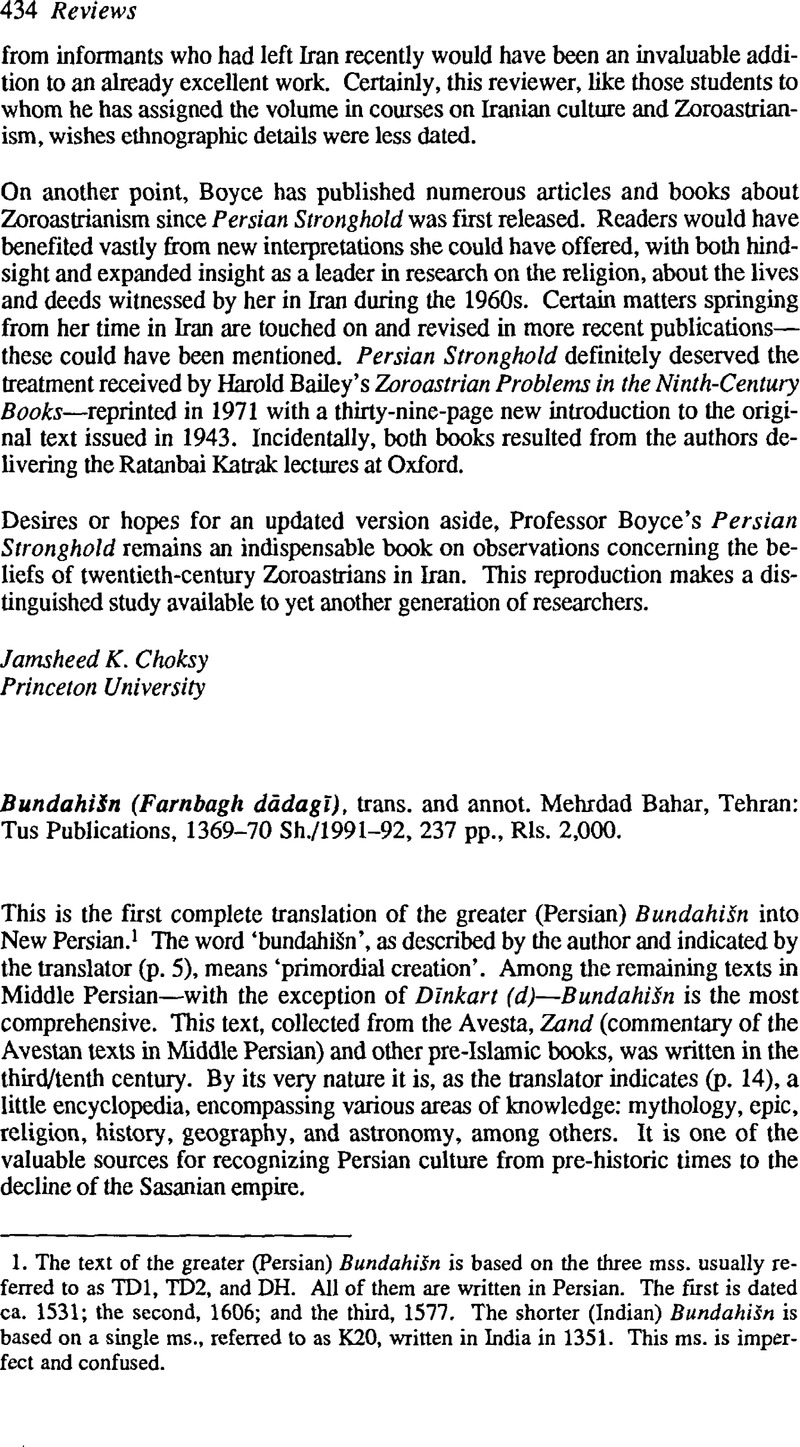No CrossRef data available.
Published online by Cambridge University Press: 01 January 2022

1. The text of the greater (Persian) Bundahišn is based on the three mss. usually referred to as TD1, TD2, and DH. All of them are written in Persian. The first is dated ca. 1531; the second, 1606; and the third, 1577. The shorter (Indian) Bundahišn is based on a single ms., referred to as K20, written in India in 1351. This ms. is imperfect and confused.
2. For a detailed description of the contents of the text and recognition of the reference books and studies that it contains, see Eir, BUNDAHlSN (D. Neil MacKenzie).
3. “Asam.vohu, the second of the four great prayers of the Zoroastrians, the other being Ahuna.vairyo (y.27.13), Yer\he.halam (y.27.15) and Airyama.iSyo (y.54.1).. .” (Eir [B. Schlerath]).
4. See Irach J. C. Taraporewala, “The Circle of Perfection,” in Dinshah Irani Memorial Volume (Bombay, 1934); EIr, ARDWAHlST (M. Boyce).
5. Fath b. Ali b. Mohammad Isfahani Bondari, al-Shahnama, trans, into Arabic (620-21/1223-24), ed. ‘A. ‘Azzam (first published in Cairo, repr. Tehran: Asadi Bookshop, 1349 Sh./1970); M. Minovi (ed.), The Story of Siyawush, intr. Mehdi Qarib, 2d ed. (Tehran: Cultural Studies and Research Institute, 1369 Sh./1990); Dj. Khaleghi-Motlagh (ed.), The Shahnama (California and New York: Mazda Publishers, 1369 Sh./1990), vol. 2.